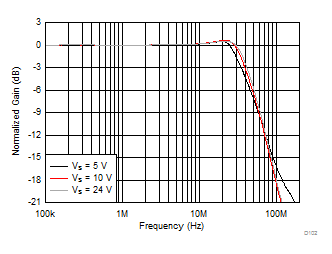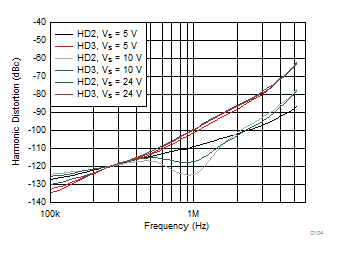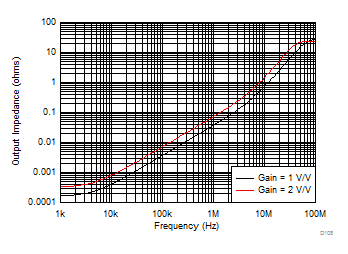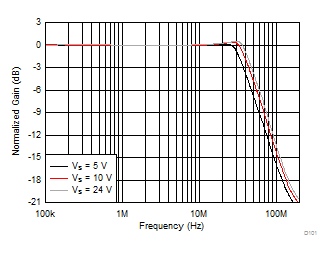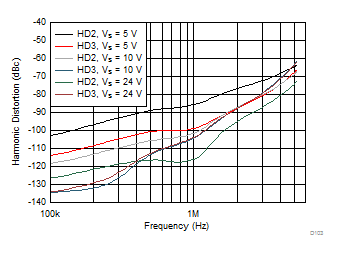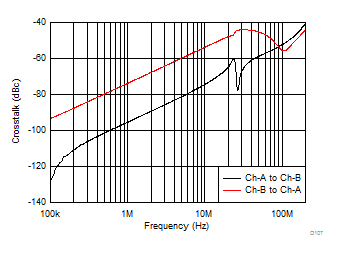SBOS789C August 2017 – February 2020 OPA2810
PRODUCTION DATA.
- 1 Features
- 2 Applications
- 3 Description
- 4 Revision History
- 5 Device Comparison Table
- 6 Pin Configuration and Functions
-
7 Specifications
- 7.1 Absolute Maximum Ratings
- 7.2 ESD Ratings
- 7.3 Recommended Operating Conditions
- 7.4 Thermal Information
- 7.5 Electrical Characteristics: 10 V
- 7.6 Electrical Characteristics: 24 V
- 7.7 Electrical Characteristics: 5 V
- 7.8 Typical Characteristics: VS = 10 V
- 7.9 Typical Characteristics: VS = 24 V
- 7.10 Typical Characteristics: VS = 5 V
- 7.11 Typical Characteristics: ±2.375 V to ±12 V Split Supply
- 8 Detailed Description
- 9 Application and Implementation
- 10Power Supply Recommendations
- 11Layout
- 12Device and Documentation Support
- 13Mechanical, Packaging, and Orderable Information
Package Options
Mechanical Data (Package|Pins)
Thermal pad, mechanical data (Package|Pins)
Orderable Information
7.11 Typical Characteristics: ±2.375 V to ±12 V Split Supply
at VO = 2 VPP, RF = 1 kΩ, RL = 1 kΩ and TA ≈ 25°C (unless otherwise noted)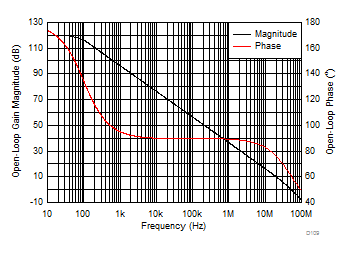
| Simulated with no output load |
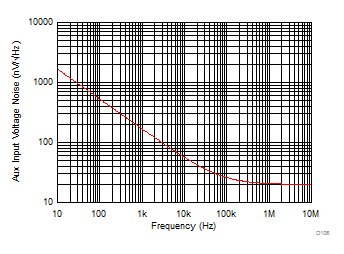
| Measured then fit to ideal 1/f model |
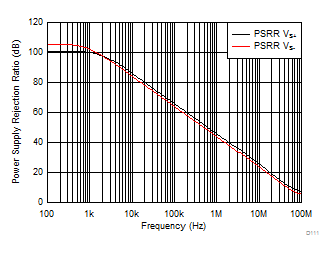
| Simulated Curves, VS = 5 V and 10 V |
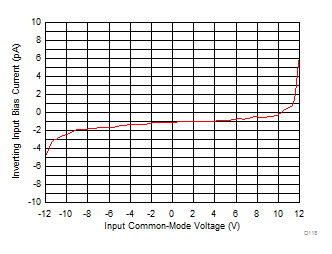
| VS = ±12-V |
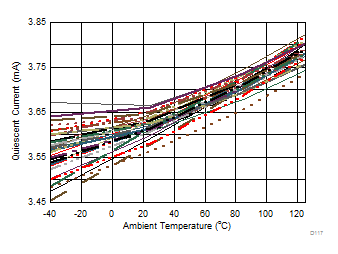
| 70 units, DGK package |
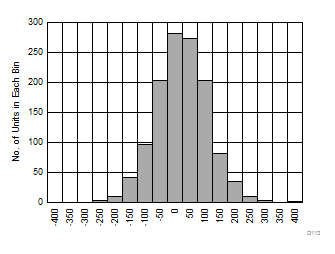
| Input offset voltage (µV), 1246 units |
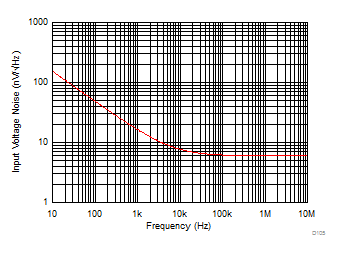
| Measured then fit to ideal 1/f model |
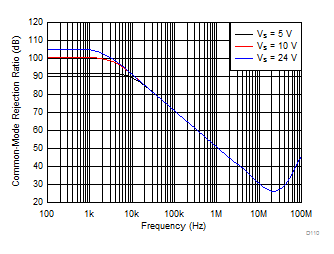
| Simulated curves |
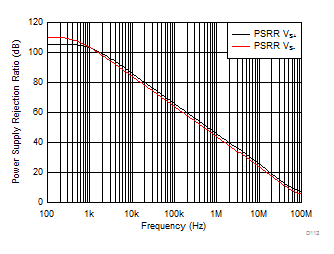
| Simulated curves, VS = 24 V |
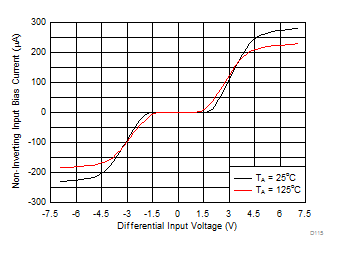
| Abs (VIN,Diff (max)) = VS when VS < 7 V |
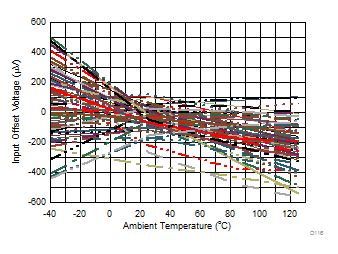
| 70 units, DGK package |
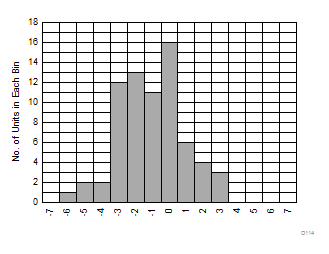
| Input offset voltage drift (µV/°C), –40°C to +125°C fit, 70 units |
